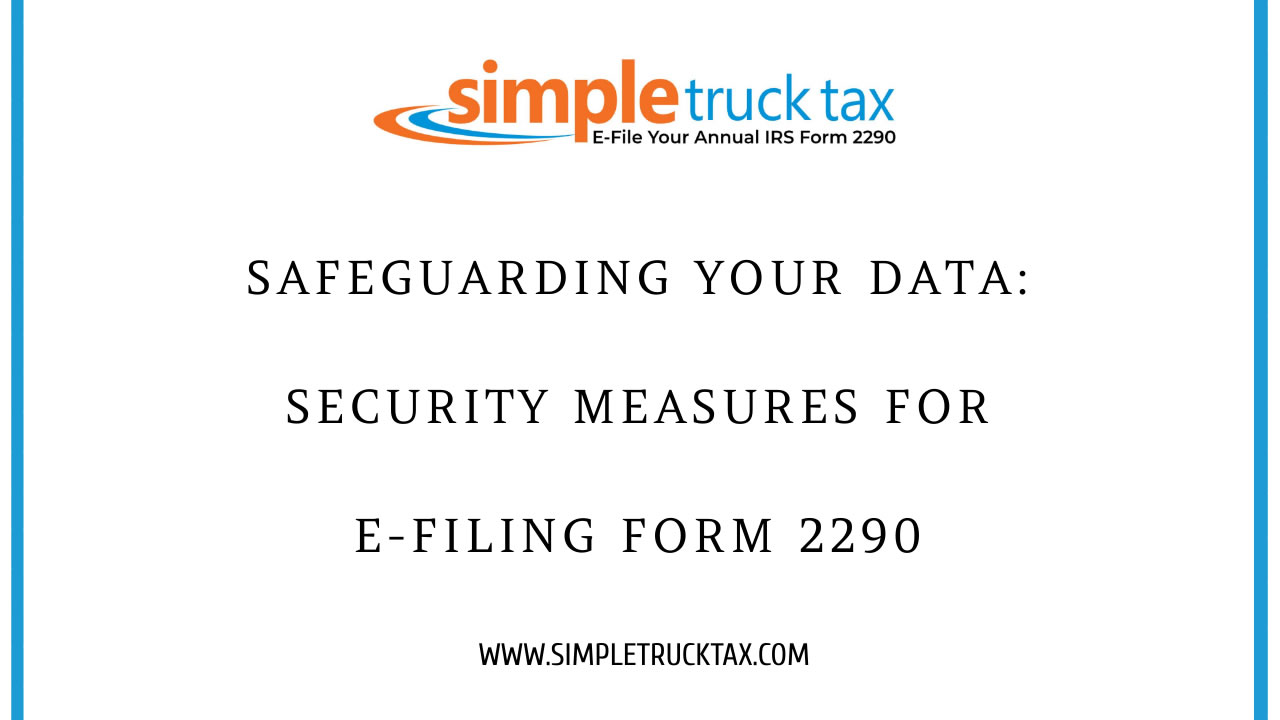
Safeguarding Your Data: Security Measures for E-Filing Form 2290
In today's digital age, the convenience of e-filing has become increasingly popular. E-filing allows taxpayers to file their taxes online, saving them time and effort. However, with the rise of cybercrime, it is crucial to take security measures to ensure the protection of your sensitive data, especially when e-filing Form 2290.We will discuss some essential security measures you can take to safeguard your data while e-filing.
1. Choose a Secure E-filing Platform:
When choosing an e-filing platform for Form 2290, it is crucial to select a trusted and secure provider. Look for platforms that use advanced encryption technologies to protect your data during transmission. Additionally, ensure that the provider has a robust privacy policy and follows industry standards for data protection.
2. Create Strong Passwords:
One of the simplest yet most effective ways to enhance security is by creating strong passwords. Avoid using easily guessable passwords like your birthdate or pet's name. Instead, use a combination of uppercase and lowercase letters, numbers, and special characters. Additionally, refrain from reusing passwords across multiple platforms.
3. Enable Two-Factor Authentication:
Two-factor authentication (2FA) adds an extra layer of security by requiring two forms of identification before granting access to your account. This usually involves entering a password and then providing a unique verification code, which is often sent to your mobile device. Enabling 2FA significantly reduces the risk of unauthorized access to your e-filing account.
4. Keep Your Software Up to Date:
Regularly updating your software, including your operating system, web browsers, and antivirus programs, is crucial for maintaining security. These updates often patch security vulnerabilities discovered by developers, making it harder for hackers to exploit them. Enable automatic updates whenever possible, as it ensures that you have the latest security patches installed.
5. Be Wary of Phishing Attacks:
Phishing attacks are a common method used by cybercriminals to steal sensitive information. Be cautious when receiving emails or messages that request personal or financial information. Legitimate e-filing platforms will never ask for sensitive data via email, so avoid clicking on suspicious links or providing information without proper verification.
6. Regularly Backup Your Data:
Data loss can occur due to various reasons, including hardware failure, malware attacks, or accidental deletion. To mitigate the risk of losing important data, regularly back up your files to an external storage device or cloud storage. This ensures that even if your data is compromised, you have a secure backup to rely on.
7. Educate Yourself about Cybersecurity:
Staying informed about the latest cybersecurity threats and best practices is crucial for safeguarding your data. Regularly educate yourself about common cyber threats, such as malware, ransomware, and phishing attacks. By staying updated, you can identify potential risks and take appropriate measures to protect your data.
As e-filing continues to gain popularity, it is essential to prioritize the security of your sensitive data. By following the security measures discussed , you can minimize the risk of unauthorized access and data breaches. Remember, investing in data security is an investment in your peace of mind. Safeguard your data and e-file your taxes securely
Note: For more information, visit IRS website